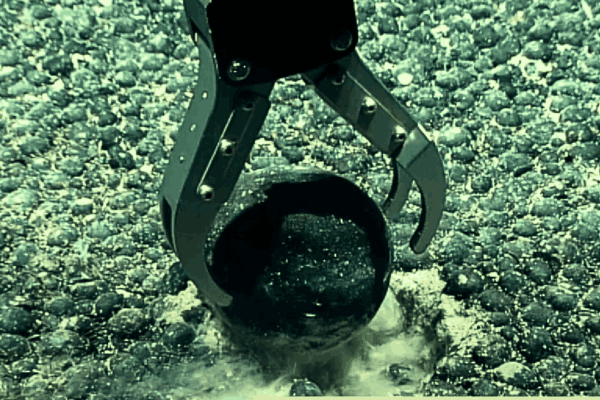The DISCOVERY
In the pitch-black depths of the Pacific Ocean, scientists have made a groundbreaking discovery—oxygen is being produced in complete darkness by metallic lumps known as polymetallic nodules. This phenomenon, referred to as “dark oxygen,” challenges long-held beliefs about how life on Earth might have originated.
Dark Oxygen in the Abyss
Traditionally, it was believed that only living organisms, such as plants and algae, could produce oxygen through photosynthesis, a process that requires sunlight. However, at a depth of 13,000 feet in the Clarion-Clipperton Zone (CCZ) between Hawaii and Mexico, researchers observed something astonishing.
These potato-shaped nodules, rich in metals like cobalt, nickel, and manganese, were generating oxygen in total darkness, raising intriguing questions about the mechanisms of oxygen production.
The Surprising Dark Oxygen Discovery
Initially, the discovery was met with skepticism. Andrew Sweetman, the lead author of the study from the Scottish Association for Marine Science (SAMS), recounted how he initially dismissed the readings as equipment malfunctions.
However, repeated experiments confirmed that the nodules were indeed producing oxygen, defying the conventional understanding that oxygen production required sunlight. This realization marked a significant turning point in oceanic research.
Electrochemical Reactions at Work
Further investigation revealed that the nodules carried an electric charge similar to that of an AA battery. This charge enabled a process called seawater electrolysis, where water is split into hydrogen and oxygen.
The discovery of electrochemical oxygen production in the ocean’s depths not only redefines our understanding of oxygen generation but also has profound implications for the origins of life on Earth and potentially on other planets.
Implications for Ocean Mining
The CCZ is a region of great interest for mining companies due to its rich deposits of metals essential for green technology, such as electric car batteries and solar panels. However, this new discovery raises concerns about the environmental impact of deep-sea mining.
The production of dark oxygen by these nodules suggests they play a crucial role in the deep-sea ecosystem, a role that could be disrupted by mining activities, potentially jeopardizing the delicate balance of marine life.
Rethinking the Origins of Life
The presence of dark oxygen production in the ocean’s depths prompts scientists to reconsider how complex life might have originated on Earth.
Nicholas Owens, director of SAMS, highlighted that this discovery could suggest alternative pathways for the evolution of life, possibly in environments similar to those found on other ocean worlds like Europa and Enceladus.
This revelation opens up new avenues of exploration in our quest to understand life’s beginnings.
Future Research Directions
As research continues, many questions remain about the mechanisms behind dark oxygen production and its ecological significance. Understanding these processes could provide new insights into the resilience and adaptability of life in extreme environments.
The study, published in Nature Geoscience, underscores the need for caution in exploiting deep-sea resources and emphasizes the importance of continued scientific exploration in our planet’s least understood regions.
This discovery not only challenges existing scientific paradigms but also highlights the intricate connections between geological processes and the potential for life in the most unexpected places. As we delve deeper into the mysteries of the ocean, we may uncover more secrets that reshape our understanding of life on Earth and beyond.
Watch here : Alien Creatures in the Pacific Ocean Found by Scientists
Also Read : The Revolutionary Office Chairs




